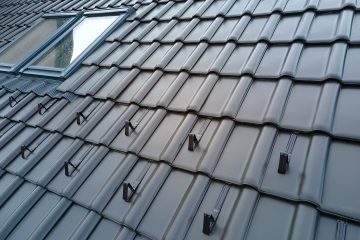You might not have thought about roof vents until now. Perhaps you’ve noticed a spike in your energy bills, stuffy air, or odors in your home. Or, maybe you’re concerned about ice dams or dry rot.
By having the right ventilation for your roof, you can make your home more comfortable while extending the life of your roof. The challenge becomes differentiating between the different types of ventilation available for various roofing systems. This article will help unravel the mystery.
If you have a leaky roof vent, or one nearing the end of its life, contact the pros at Polaris Roofing Systems for a free inspection and estimate for service! Call us at (928) 699-4840!
2 Types of Vents
All roof vents fall into one of two categories:
- Exhaust vents: these vents remove hot or stale air from your home
- Intake vents: these vents bring fresh, cool air into your home.
When possible, it’s recommended to have both types of vents because hot air rises, and having it trapped in your attic space is a recipe for moisture buildup. In turn, this leads to odors, mold, and mildew. If you cannot have both types of vents, an exhaust roof vent is better than no vent at all.
Types of Exhaust Vents
1. Ridge Vent

Ridge vents sit atop your roof at the peak and span the roof line. As the most common type of roof vent, they are widely considered the best option because they offer superior vertical ventilation by covering the highest point of your roof.
To ensure a seamless look, they are covered by a color-matched ridge cap shingle.
2. Box Vent

Box vents are installed by making a hole in the roof that the box vent covers. The shape, as you might have guessed, is square. Typically, a roof will have multiple box vents because a single box vent won’t be enough to provide adequate ventilation.
3. Off Ridge Vent
The off ridge vent is a type of vent that covers less surface area than the ridge vent and is used on roofs with a variation of asphalt shingles.
This vent gets its name because, like the ridge vent, it sits near the peak of the roof. However, the structure is more similar to a box vent.
The smaller size and lower position make off ridge vents less effective than a ridge vent, but they are still a top choice for smaller ridge lines and irregularly shaped rooftops.
4. Attic Power Vent
These electric-powered vents are often sought after in homes where attics undergo extreme temperature fluctuations. The vents function similarly to placing a fan in a hot, stuffy room.
If your attic is adequately insulated and you run the air conditioner habitually in the summer, this vent might not be the best option because it will suck cool air from below, potentially raising your electric bill. Solar-powered attic vents are also an option.
5. Roof Turbines

Also called “whirlybird ventilation,” roof turbines feature a series of connected blades that spin when the wind hits them. Unfortunately, you need significant wind for them to operate, which can be problematic on days without a breeze.
Types of Intake Vents
1. Soffit Vent
By definition, soffit means the underside of a part of a building. In the world of roof vents, a soffit vent tends to be placed underneath a roof’s eaves.
Like the ridge vent, the soffit vent is one of the most popular and preferred types of roof vents. They contain a series of holes that function to push fresh air into your attic, forcing out hot, stale air. To increase performance, increase the size of your soffit vents.
2. Gable Vent
The gable vent sits at the gable portion of a home, which is the triangular-shaped section where roof edges intersect. Often, multiple gable vents are used to create a cross breeze. The idea sounds great in theory, but the airflow is often blocked by beams and other structures.
Get the Best Attic Ventilation Systems
Polaris Roofing Systems is a full-service residential roofing company, catering to all your roofing needs. With over 25 years of experience, we are trusted experts serving Flagstaff, AZ and all surrounding cities.
While we often recommend a combination ventilation system that includes ridge and soffit vents, we recognize that each home is unique, so we provide the best ventilation system for the situation. To schedule a free roof inspection or get more info about roof vents, call us at (928) 699-4840 or contact us online!


